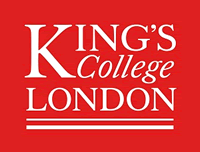About the Project
Stroke is a common complication of atrial fibrillation (AF), which itself is the most widespread cardiac arrhythmia. However, the assessment of stroke risk is not straightforward in a large population of AF patients who are presented in sinus rhythm (SR), including patients after catheter ablation (CA) therapy, i.e. “healthy” patients. The aim of the proposed project is to develop a novel image-based computational workflow for predicting stroke risk in this challenging population.
During AF, the atrium wall stops contracting in a synchronous rhythm and starts quivering. This behaviour is triggered by abnormal electrical impulses at arrhythmogenic driver site. As a result, the motion of the blood flow in the atrium is weakened, making it prone to blood stasis. This abnormal flow behaviour promotes blood clot formation and thromboembolism in anatomical regions where blood velocities are substantially lowered, e.g. the left atrial (LA) appendage. These thromboemboli can be carried by the blood flow to other organs, such as the brain, with subsequent risk of stroke. Catheter ablation (CA) consists in burning the driver site in the atrial wall by applying heat via a catheter, in order to suppress the abnormal electrical impulses and restore normal contraction, i.e. sinus rhythm (SR). However, delivering heat to the wall results in both higher blood temperatures, which further increase the risk of clot formation, and altered mechanical properties of the injured wall. Further, the strong dependence on patient-specific factors that are difficult to quantify with imaging data alone, e.g. blood temperature and residence times, makes stroke risk prediction post-CA very challenging – especially as the patients stay in SR and appear arrhythmia-free. In this context, personalised image-based modelling will deliver an effective tool to predict this potentially fatal complication in a challenging patient population.
More information can be found here: http://www.imagingcdt.com/research/projects/dtp-p9--stroke-risk-in-a-healthy-patient-personalised-modelling-of-thrombus-formation-and-movement-i
Details
The project will develop and validate personalised models of the thermal-fluid dynamics in the left atrium during CA, including mechanisms of blood stasis, thrombus formation and its location tracking in the blood stream. The models will be applied to three cohorts (healthy volunteers in SR, pre-CA patients in AF, post-CA patients in SR) to predict stroke risk. Our personalised modelling approach will allow for significantly improved stroke risk assessment and anti-coagulation therapy prescription for patients undergoing CA therapy.
Person Specification
The successful candidate should have or expect to have an Honours Degree at 2.1 or above (or equivalent) in Bioengineering or Engineering, Mathematics, Physics, Computer Science or a related discipline. A basic knowledge of programming (Matlab, C/C++ or Fortran) and/or medical imaging is a desired skill, though not essential.
Funding Notes
Each studentship will be funded for 3.5 years. This includes tuition fees, stipend and generous project consumables. Students will receive a tax-free stipend of approximately £16,000 per year and an allowance will be provided for research consumables and for attending UK and international conferences.
EU students are eligible to apply for funding if they have lived, worked or studied within the UK for 3 years prior to the funding commencing.

 Continue with Facebook
Continue with Facebook

